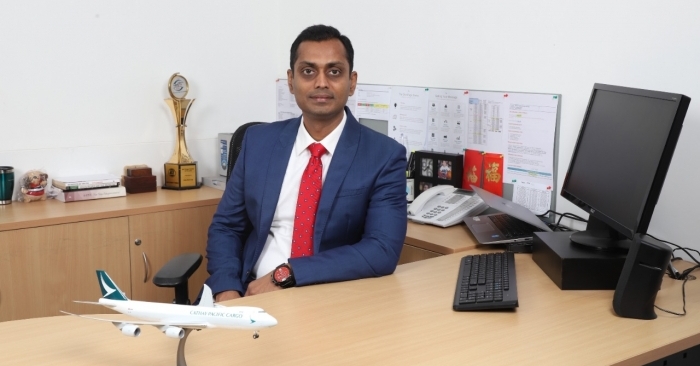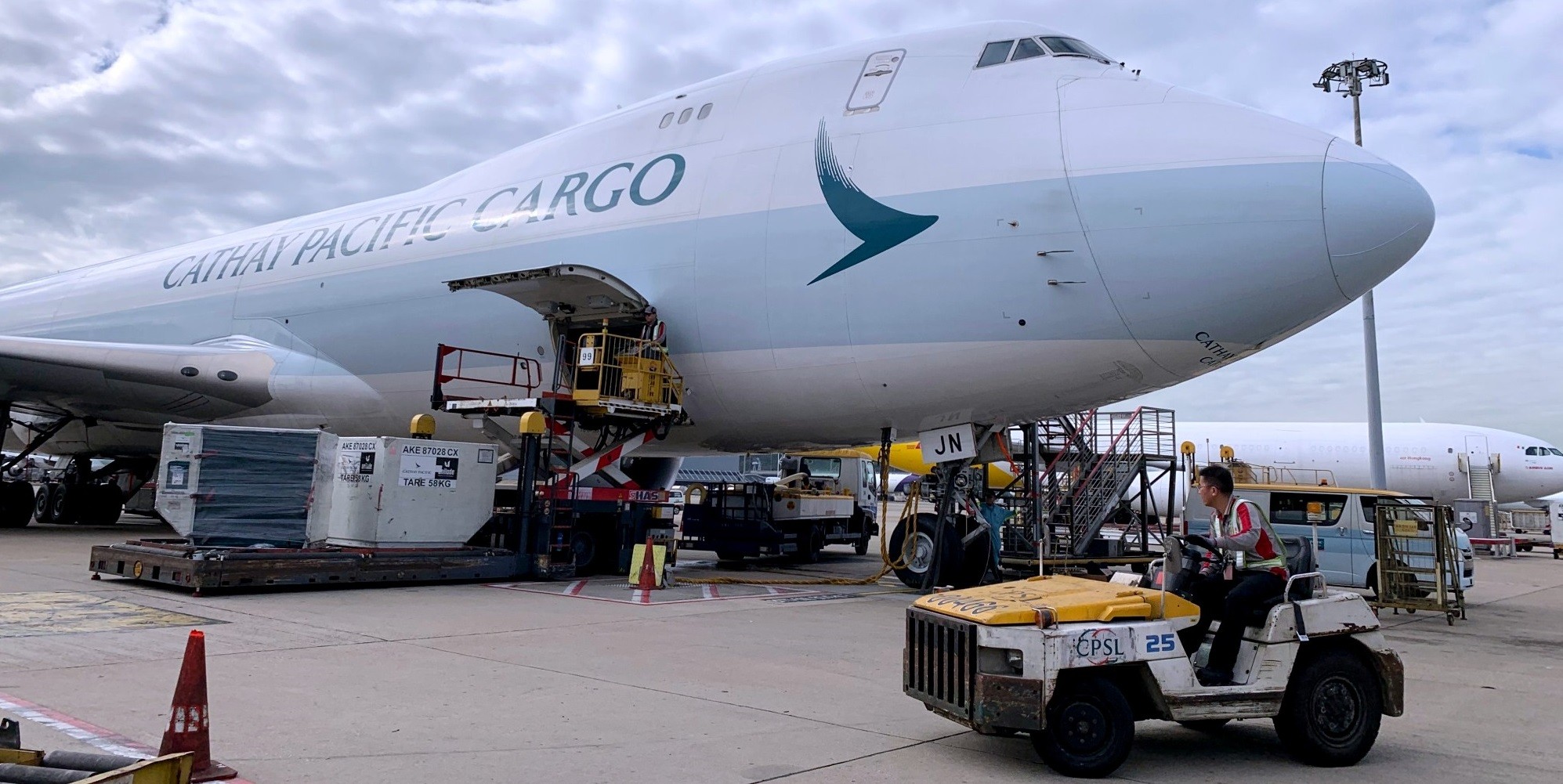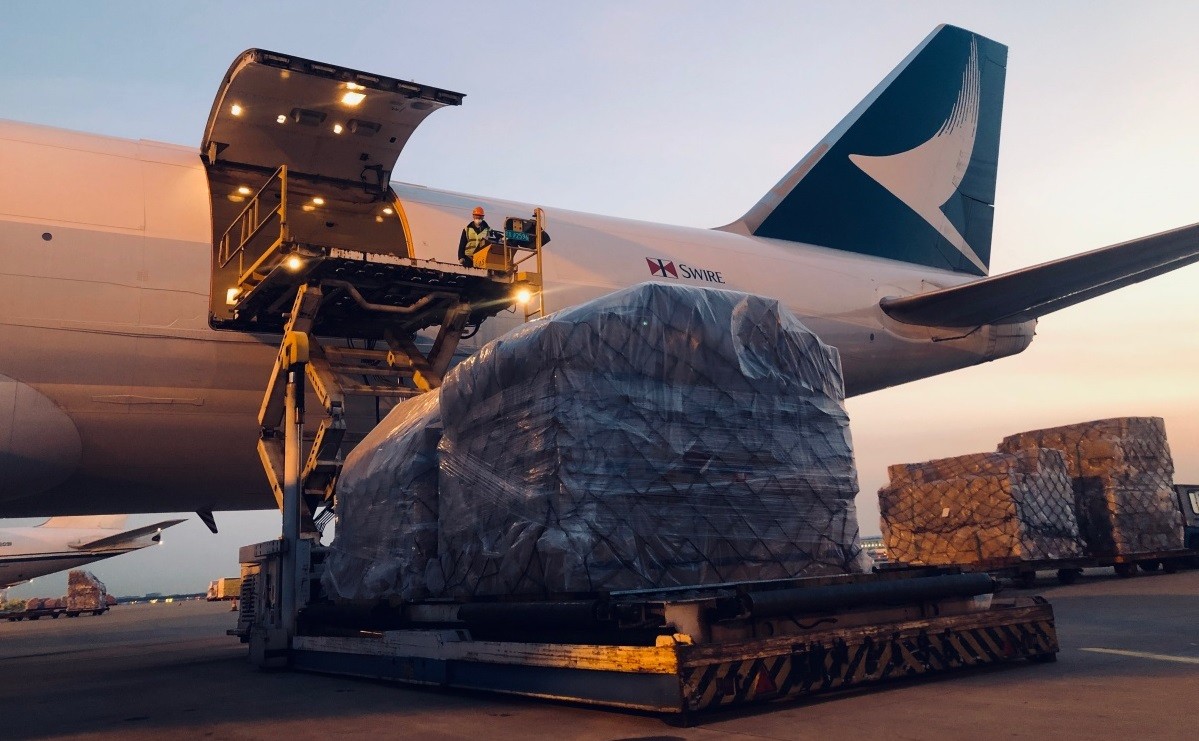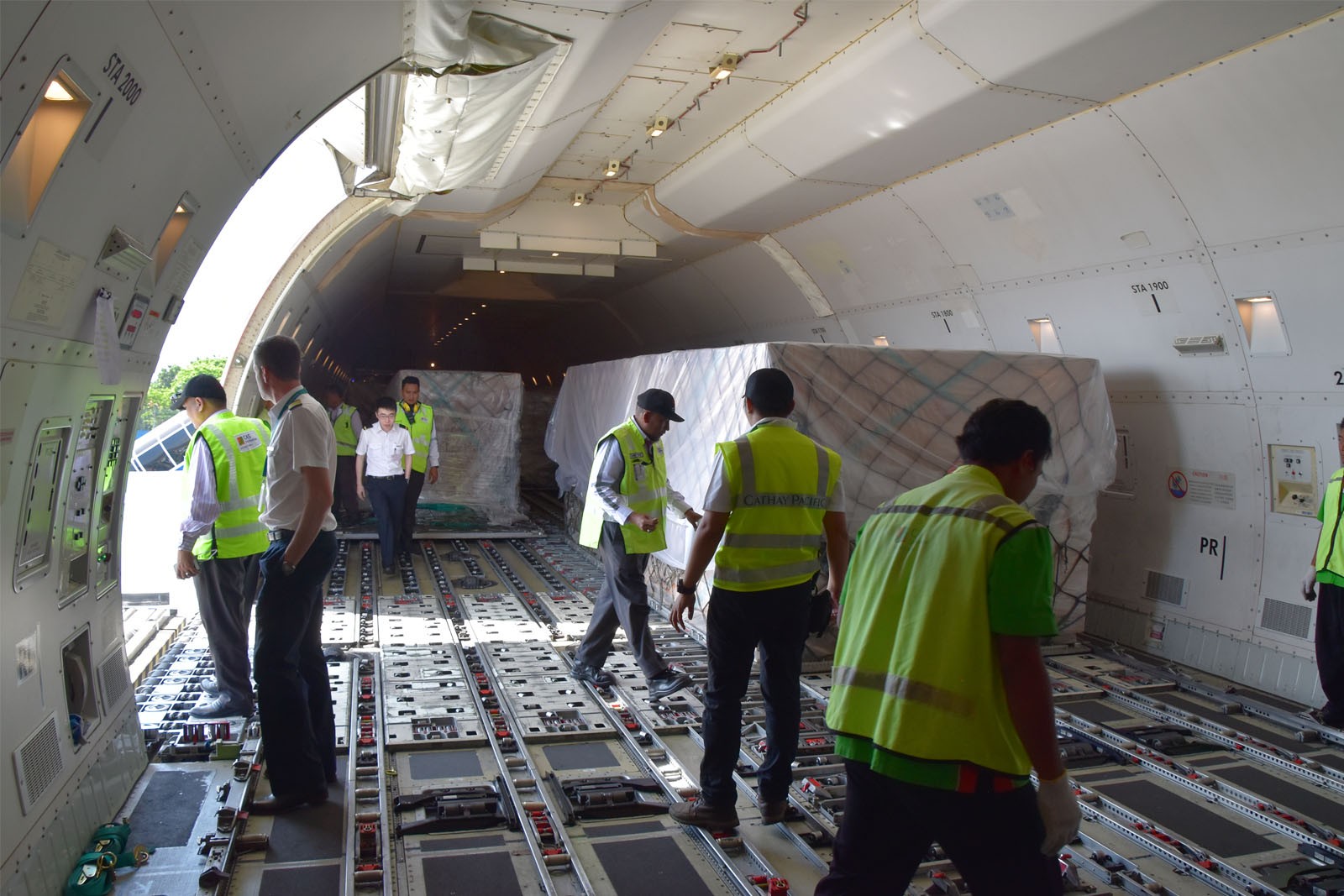Cathay Pacific Cargo shows agility in a constantly fluctuating market
In an exclusive interaction with Indian Transport and Logistics News, Rajesh Menon, regional head of cargo for South Asia, Middle East and Africa, Cathay Pacific Airways, talks about the global air cargo industry, the value proposition of Cathay, Indian airports, Indian export and import through the air, partnerships, digitalization and future.

August 13, 2021: In the recently released The International Air Transport Association (IATA) World Air Transport Statistics (WATS) for the year 2020, Cathay Pacific Airways, the Hong Kong-based airline, was ranked 5th among top global airlines with 8.1 billion scheduled cargo tonne-kilometres (CTKs) flown.
In an exclusive interaction with Indian Transport & Logistics News, Rajesh Menon, regional head of cargo for South Asia, Middle East and Africa, Cathay Pacific Airways, talks about the global air cargo industry, the value proposition of Cathay, Indian airports, Indian export and import through the air, partnerships, digitalization and future.
He has been with Cathay Pacific for 15 years in different departments. Started with airport operations and then moved to a sales and marketing role in the passenger side of the business. It's been now three years since he is in the cargo role.
Tell me how you perceive the current air cargo market and industry of South Asia, the Middle East and Africa? How resilient it is? How is the demand and supply equation evolving here?
As far as the airlines are concerned the air cargo business looks like a bright spot. But that's because of the demand and supply mismatch. If you have to compare 2020 with 2019, we saw a growth of 16 percent on revenue even though the tonnage had gone down.
I would say that only agility is working for us because every week is different and things change very fast. Borders get opened and closed very fast. So we are seeing very fluctuating business models.
For example, we started once a week freighter service from Hong Kong to Riyadh. And it's been more than six months at this working continuously. And we are contemplating continuing this for a long period of time.
We started passenger flights back into Dubai. And then the second one was introduced, so we are flying two times a week and the main driver was cargo as the belly space has been completely full. South Asia Middle East & Africa (SAMEA) has been consistent and it's been able to react very fast. South Asia is one of the biggest suppliers for the world. We are ensuring that we are getting enough capacity into this region to cater to this demand.

"We have freighters which are 747s of 400 and 800 series and these are the best when it comes to freighter requirements."
Tell us how each of these regions is performing from a Cathay Pacific perspective?
We fly only passenger flights into South Africa and that's the only capacity available there. Because of the borders being closed we don’t have anything going into South Africa or Africa right now.
Going to the Middle East, we have freighters moving from Hong Kong, stops in Dubai DWC and goes up to Europe. Some of the things we carry the most are general cargo, engines and oversize shipments.
The Hong Kong Riyadh freighter comes back via Dubai so it picks up a lot of stuff towards Hong Kong. We have slowly grown from that one freighter to two passenger flights. So we now have three days of the week ex-Dubai. And the good news is that both the passenger flights are doing very well with full belly capacity and freighter also is going with 70 percent utilization at certain days of the week, which helps us to cater to the needs of Far East region and sometimes towards southeast pacific also.
South Asia is a bigger market with India being the epicentre especially because the import capability into the country is huge. Most of the imports come from China and Hong Kong and we have multiple flights that come to the biggest market starts with Chennai then goes to Delhi then have Dhaka and Mumbai. We have few flights coming to Bangalore and Colombo also. These regions have a good amount of input coming in because they produce a lot of things. The export is equally been strong, but that has fluctuated based on the lockdown.
What makes Cathay Pacific different in the value proposition and why should anybody choose you above other carriers?
We have freighters which are 747s of 400 and 800 series and these are the best when it comes to freighter requirements. With nose loading capabilities, we carry a lot of over-dimensional cargo for which we are specialists. We continuously evolve and upgrade ourselves to cater to the current market needs. Ensuring that every state in a different part of the world will get access to Covid-19 vaccines with ease was another focal area.
Whenever people come to work with us, they know that we are certified and experts to handle fresh cargo and pharma. Forwarders are coming to us and working with us because they see that we have invested in these solutions.
We collaborated with Envirotainer to offer its new RLP and became the first Asian carrier to offer this extensive cool chain option on a fleet for transporting temperature-sensitive shipments. We have developed Skid Fire Containment Bag (SFCB) because the world is going to change when it comes to lithium battery carriage and with a battery-driven future.
How many flights of Cathay Pacific are flying to India in a week?
We fly 15 freighters per week and passenger flights are around seven to eight coming as cargo only. But this also fluctuates and we do change this on an ad hoc basis if there is a demand or supply variation that changes the market.

"The minute the second wave came in we increased our capacity to 15 to 17 freighters per week on top of 12 to 14 passenger flights."
Give me an idea about the type of freight you move into and from these regions. Which are the most frequent commodities? Which are the most important trade lanes/airports?
Chennai, for example, the freight we carry is a mix of multiple things. General cargo is huge. The auto industry is big in Chennai so we carry a lot of spare parts for cars. Special products like leather cargo, perishables like food and seasonal fish. Mobile companies have set up over there and that's why there's a lot of mobile-related cargo movements.
When it comes to Delhi, it's more about engines. Samsung has set up there so a lot of Samsung-related and mobile-related carries we do especially towards Hanoi. At the same time, there's a lot of general cargo. From Mumbai, it's pharmaceuticals, perishables, over-dimensional cargo which is spare parts and it's again a mix.
Colombo is more about the garments and then there is seafood related which we carry a lot from there, which goes towards Asia and North America. When it comes to Dhaka, it is purely garments and some amount of general cargo because Bangladesh is known for the export of garments. So we carry the maximum into the Far East and North America.
On the import part, it is all the raw materials and spare parts which come into India normally from Hong Kong, and China. Then it comes from Japan and Korea as well which could be the car-related and R&D research spare parts. But when it comes to pure electronic items and pharma rated raw materials, they come from Hong Kong and China.
Tell me about the amount of Covid-19 relief materials you have flown to India? What were the items? Which were the most served airports?
Before the second wave, we used to fly around 11 freighters into India. The minute the second wave came in and we saw that there is a huge requirement for medical support in India we increased our capacity to 15 to 17 freighters per week. On top of it, we used to have 12 to 14 passenger flights to cater for the requirements.
We have delivered tonnes of relief materials and medical supplies into Delhi, Mumbai and Hyderabad which includes oxygen generators, oxygen concentrators and ventilators. There was a sharp increase in the volume of shipment of oxygen, surgical masks, sanitisers, personal production equipment, pharmaceuticals and vaccines.
Tell me about the economy of China and specifically Hong Kong in relation to the regions you deal with in terms of business between them.
Hong Kong is geographically very comfortable position, sitting next to the biggest supplier to the world that is China. South Asia, Middle East and Africa are still doing maximum trade with China. For example, India also gets the maximum cargo from those regions. Even the exports from India towards China have also grown.
Tell me about your partners, for example, the freight forwarders, or shippers. How the relationships have changed before and after Covid?
From the time the pandemic started the whole business equation have changed and every forwarder also is looking at new ways of working because there's a scarcity of space. We have grown exponentially with some of our freight forwarding partners because they are working closely with us and we were able to give solutions they're looking for.
The good part is that with this change digitalization has walked into the cargo industry. I can see that a lot of things have moved into data platforms. Most airlines and forwarders are investing in digitalisation. We would be one of those airlines that will be moving fast to create a platform that comes to all the booking behaviour so that the interactions are reduced. By the end of this quarter, we are planning to have something launched, which is 100 percent digitalized.

"We always believed in freighter capabilities and they worked very well for us, both in pre-Covid and post-Covid it was a saviour."
How many long term capacity commitments have you made with forwarders during this period?
South Asia, Middle East or Africa couldn't get into any agreement at the rate, which was expected from Hong Kong while markets like Hong Kong, China, Southeast Asia could match up with the needs over there. But when it comes to our region, we didn't see many forwarders looking at that option towards the Americas, for example, but we tied up more of within Asia when it comes to Hong Kong of China and Japan on a long term basis. But the long term doesn't mean for six months or a year. It was more about a month, or max up to three months because things were changing very fast.
How about the trend of cargo-only passenger flights and the demand for freighters in the market?
We always believed in freighter capabilities and they worked very well for us, both in pre-Covid and post-Covid it was a saviour. Cargo-only passenger flights is not a reliable model because it's a very high-cost proposition. The yields are good because there is a gap in demand and supply. But the minute borders get opened up, COP will not be able to sustain. We have only six completely converted passenger planes and we are not planning to go beyond that for the simple reason that we want to get back our passenger capacity.
Tell us about your digitalization roadmap.
We have decided to continue investing in cargo for digital projects because the future lies in that space. Most of the forwarders have also moved in that direction, they are investing big time into that. First, most of our booking platforms will be 100 percent digitalized and the soft launch will happen in the month of October.
We have introduced track and trace for vaccine product for customers to know whether the temperature is maintained at every location supported by 24/7 customer service centre.
Cathay Pacific Cargo recently announced the multi-dimensional blue tooth tracking product, Ultra Track. When it will be available in India?
We are in discussion with Indian airports because it depends on this device being fixed in the terminal. Once the approval is given we will launch it in India also.

Libin Chacko Kurian
Assistant Editor at STAT Publishing Group, he has eight years of experience in business journalism covering food & beverage, nutraceuticals and now logistics. His current passion is to understand the nuances of global supply chains and their current turmoil. Outside work, he is also interested in philosophy, history, birding and travelling. Mail him: libin@statpublishinggroup.com Follow on LinkedIn


